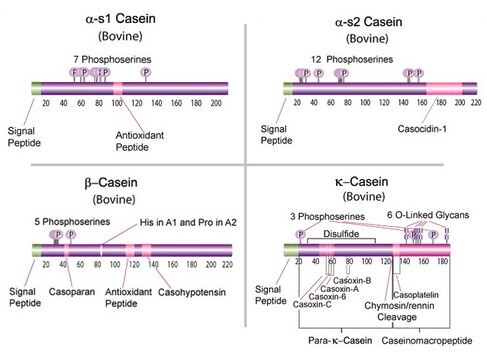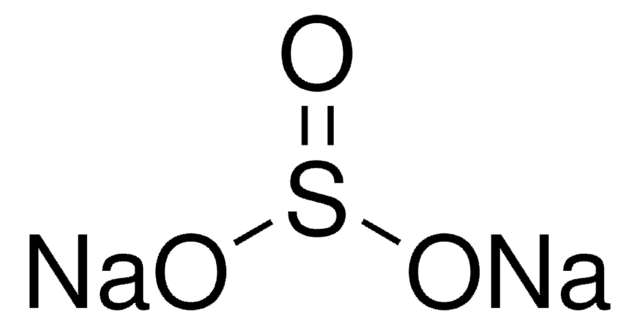All Photos(4)
About This Item
Linear Formula:
NaClO2
CAS Number:
Molecular Weight:
90.44
MDL number:
UNSPSC Code:
12352302
PubChem Substance ID:
NACRES:
NA.55
assay:
80%
grade:
technical grade
form:
flakes
powder or crystals
powder or crystals
Recommended Products
grade
technical grade
Quality Level
assay
80%
form
flakes
powder or crystals
pH
10-11 (20 °C, 100 g/L)
SMILES string
[Na+].[O-]Cl=O
InChI
1S/ClHO2.Na/c2-1-3;/h(H,2,3);/q;+1/p-1
InChI key
UKLNMMHNWFDKNT-UHFFFAOYSA-M
Looking for similar products? Visit Product Comparison Guide
General description
The acidified solution of sodium chlorite has been tested for the antimicrobial action on the broiler carcasses. It was found to be effective in the reduction of natural bioburden in a prechill procedure..
Application
Sodium chlorite may be used in the synthesis of chlorine dioxide and as a hydroxylating agent for the hydroxylation of androstenedione (steroid).
signalword
Danger
Hazard Classifications
Acute Tox. 2 Dermal - Acute Tox. 4 Oral - Aquatic Acute 1 - Aquatic Chronic 1 - Eye Dam. 1 - Ox. Sol. 1 - Skin Corr. 1B - STOT RE 2
target_organs
spleen
supp_hazards
Storage Class
5.1A - Strongly oxidizing hazardous materials
wgk_germany
WGK 2
flash_point_f
Not applicable
flash_point_c
Not applicable
Choose from one of the most recent versions:
Already Own This Product?
Find documentation for the products that you have recently purchased in the Document Library.
Customers Also Viewed
Seulgi Lee et al.
Journal of the science of food and agriculture, 99(13), 5734-5739 (2019-06-05)
Acidovorax citrulli is a plant pathogen causing bacterial fruit blotch in Cucurbitaceae family. Applying high concentration of disinfectants to seeds containing plant pathogen may substantially decrease the germination rate of seeds. Therefore, it is necessary to develop a hurdle technology
Sodium periodate, sodium chlorite, organic hydroperoxides, and H2O2 as hydroxylating agents in steroid hydroxylation reactions catalyzed by partially purified cytochrome P-450.
Hrycay EG, et al.
Biochemical and Biophysical Research Communications, 66(1), 209- 216 (1975)
G K Kemp et al.
Journal of food protection, 63(8), 1087-1092 (2000-08-17)
An acidified sodium chlorite (ASC) solution was investigated for its antimicrobial effects on broiler carcasses processed under conditions similar to those used in U.S. commercial poultry facilities. Of particular interest was the ability of the ASC solution to reduce natural
R Aly et al.
American journal of infection control, 26(4), 406-412 (1998-08-29)
Among the ways to reduce the incidence of iatrogenic infectious disease is the use of efficacious preoperative antiseptics. Iodophors and chlorhexidines, the chief presurgical disinfectants today, have various problems with practicality. A new preoperative skin antiseptic has been developed (Alcide
Sun-Young Lee et al.
Journal of food protection, 65(7), 1088-1092 (2002-07-16)
This study was undertaken to compare the efficacies of chlorous acid (268 ppm), sodium hypochlorite (200 ppm), and lactic acid (2%) in eliminating total mesophilic microorganisms, Salmonella Typhimurium, and Listeria monocytogenes on commercial mung bean sprouts immediately after treatment and
Our team of scientists has experience in all areas of research including Life Science, Material Science, Chemical Synthesis, Chromatography, Analytical and many others.
Contact Technical Service

















